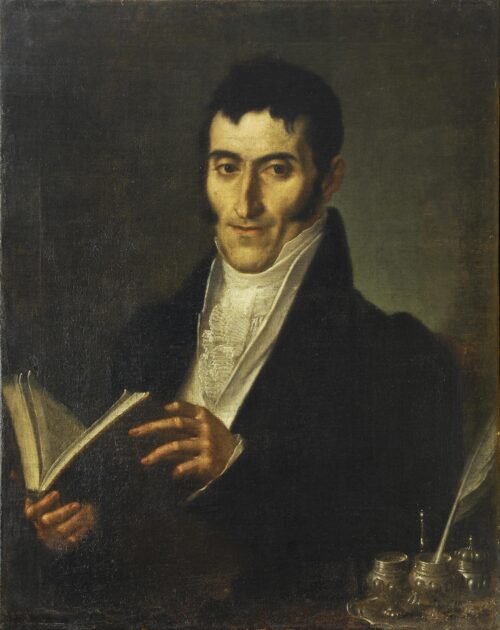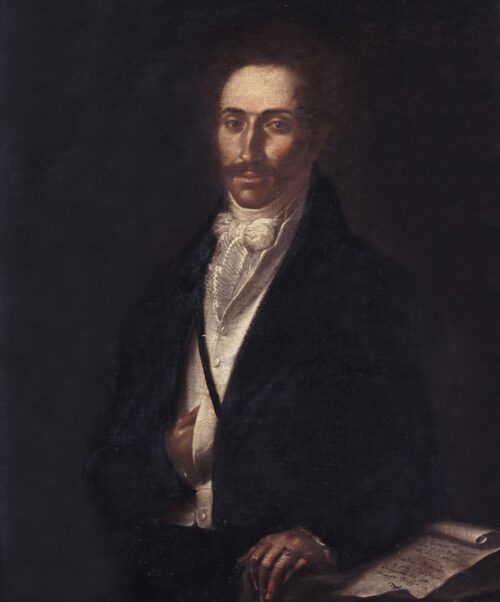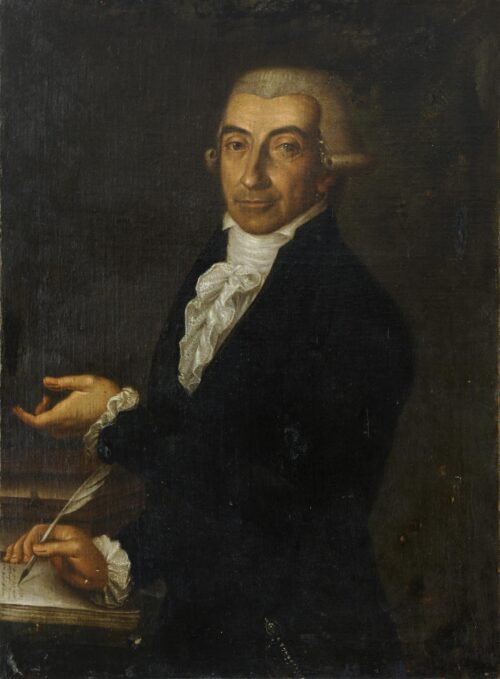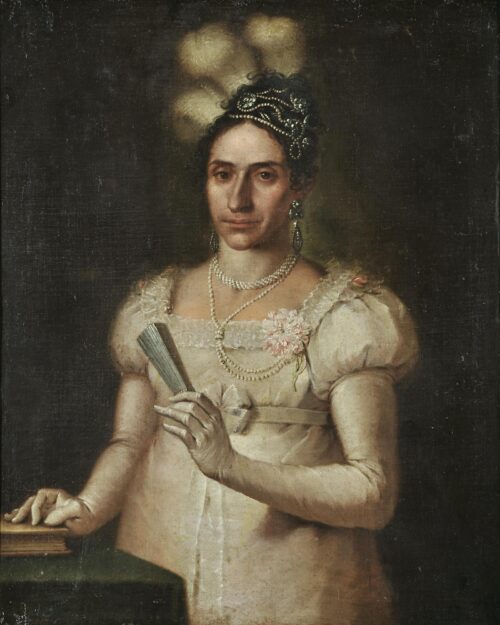
Koutouzis Nikolaos (1741 - 1813)
Portrait, ca 1803
He probably trained in the studio of Nikolaos Doxaras in Zakynthos, and under his supervision he painted in 1757 St. John of Damascus and St. Barbara at Ayios Dimitrios, Kollas, which have not survived. In 1760- 1764 he most probably travelled to Venice while in 1766 he was in Zakynthos where he painted the Procession of Ayios Dionysios, a signed and dated painting which is in the women’s loft of the church of Ayios Dionysios. In 1770 he received facial injuries in a brawl. In 1777 he was ordained a priest in Lefkada and then became a parish priest in the churches of his birthplace. Along with his painting and church work he was also involved with writing satirical verse, intensely critical of his period, while his eccentric behaviour such as his subversive and theatrical way of conducting the divine service brought him into conflict with his surroundings. Three religious painting unities, coming from the churches of Zakynthos and specifically from Ayios Spyridon, Flambouriaris, Ayios Georgios, Petroutsis and Ayios Antonios, Andritsis, are attributed to Koutouzis. The representation of the Nativity of the Virgin Mary on the urania (ceiling) of the church of the Virgin Mary of Strangers in Corfu, as well as four paintings in the monastery of Ayios Dionysios on Zakynthos, with subjects taken from the life of the saint, are also his works.
A leading figure in Ionian island art during the 18th and the beginning of the 19th century he cultivated mainly religious scenes, while in the context of secular painting his contribution to the development of portraiture is considered most important. He followed the models of the Italian baroque and broke with the tradition of post-Byzantine art, both on the level of technique and of visual treatment. His work exercised an influence on his fellow artists and was carried on in the painting of his student, Nikolaos Kantounis.

Portrait, ca 1803

Georgios Pyrris (Harbourmaster of Zante)

Portrait of a Noble Man with Wig, ca 1800

Portrait of a Lady with Diadem, ca 1800

We use cookies to make our site work properly, to personalize content and ads, to provide social media features and to analyze our traffic. We also share information about how you use our site with our social media, advertising and analytics partners. Read the Cookies Policy.
These cookies are necessary for the website to function and cannot be switched off in our systems. They are usually only set in response to actions made by you which amount to a request for services, such as setting your privacy preferences, logging in or filling in forms. You can set your browser to block or alert you about these cookies, but some parts of the site will not then work. These cookies do not store any personally identifiable information.
If you disable this cookie, we will not be able to save your preferences. This means that every time you visit this website you will need to enable or disable cookies again.
These cookies tell us about how you use the site and they help us to make it better. For example these cookies count the number of visitors to our website and see how visitors move around when they are using it. This helps us to improve the way our site works, for example, by ensuring that users find what they are looking for easily. Our website uses Google Analytics for statistics reporting.
Please enable Strictly Necessary Cookies first so that we can save your preferences!